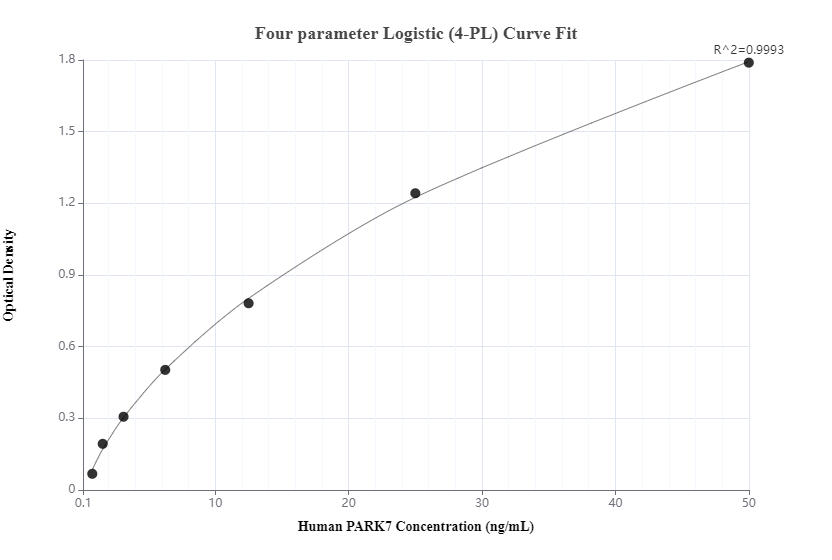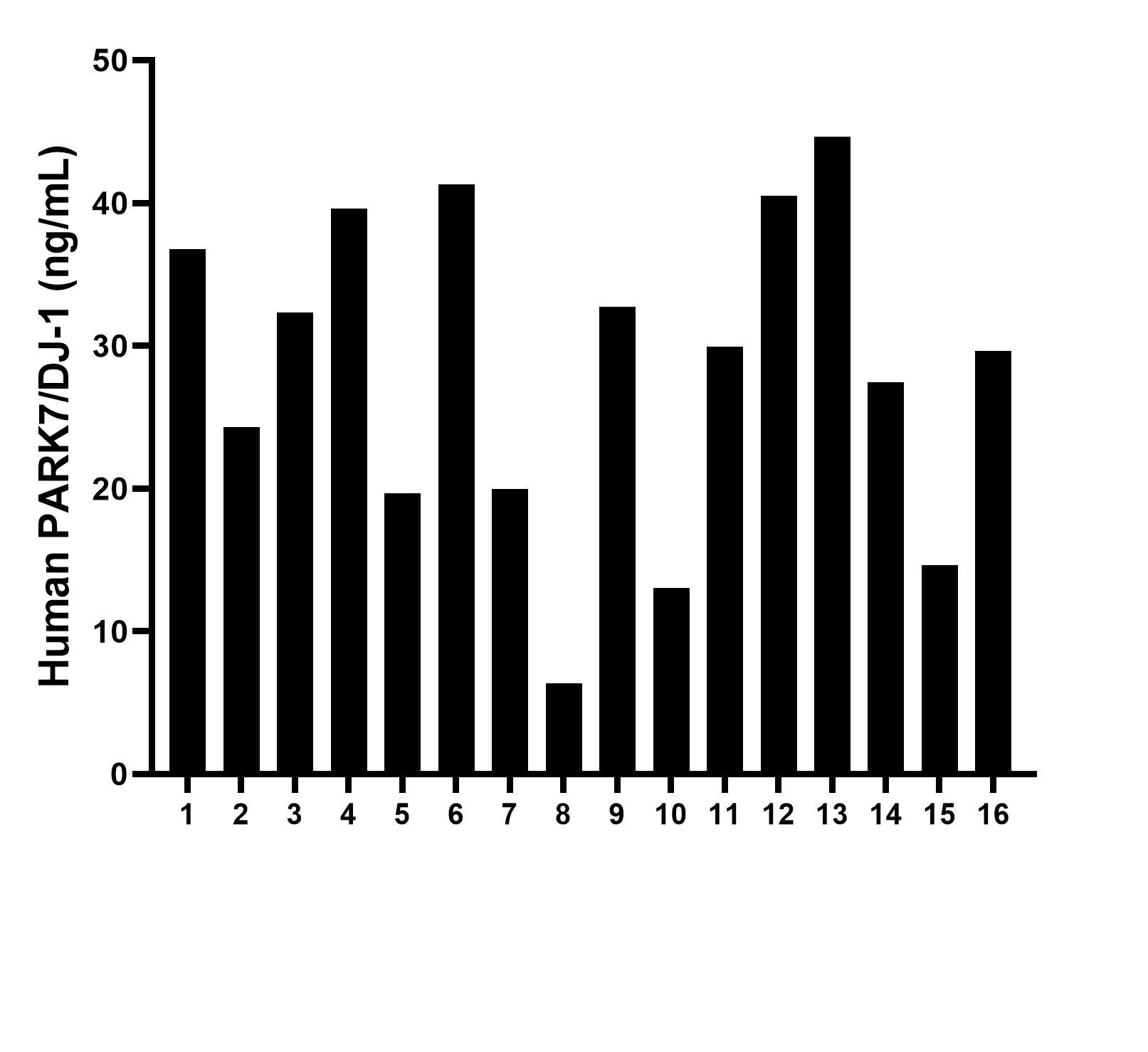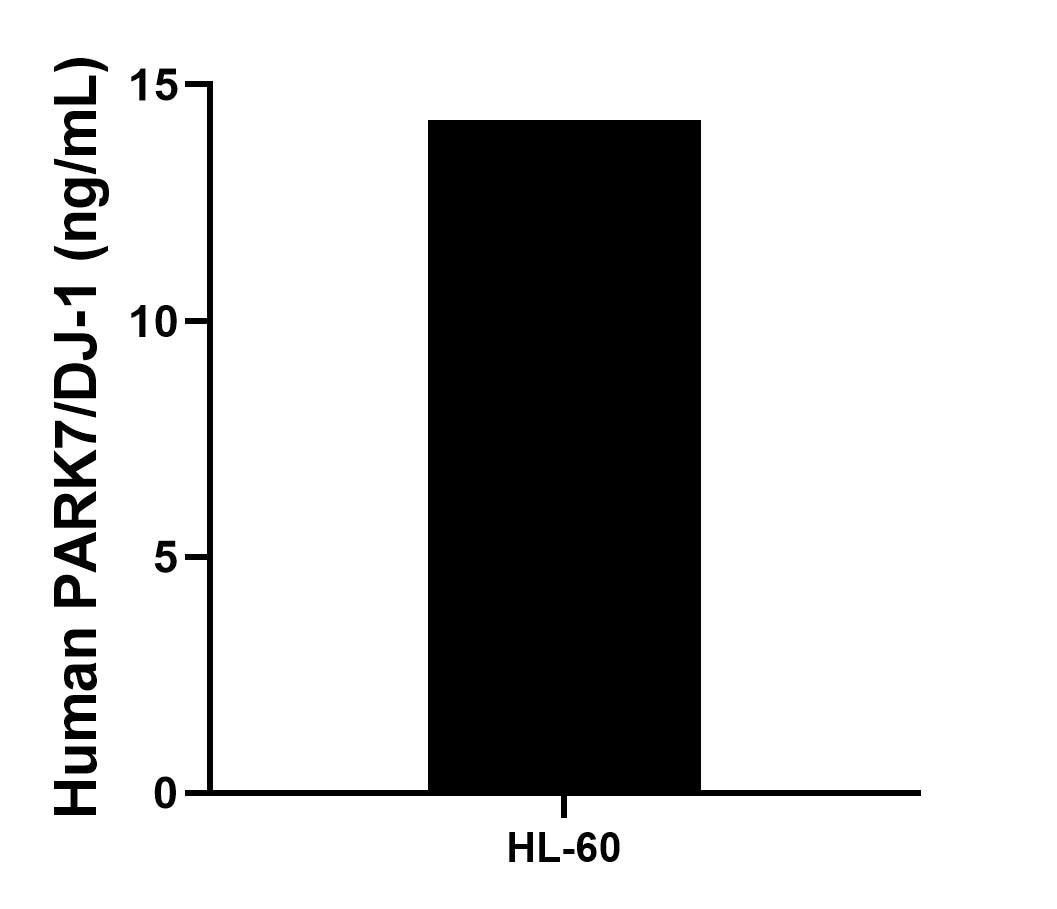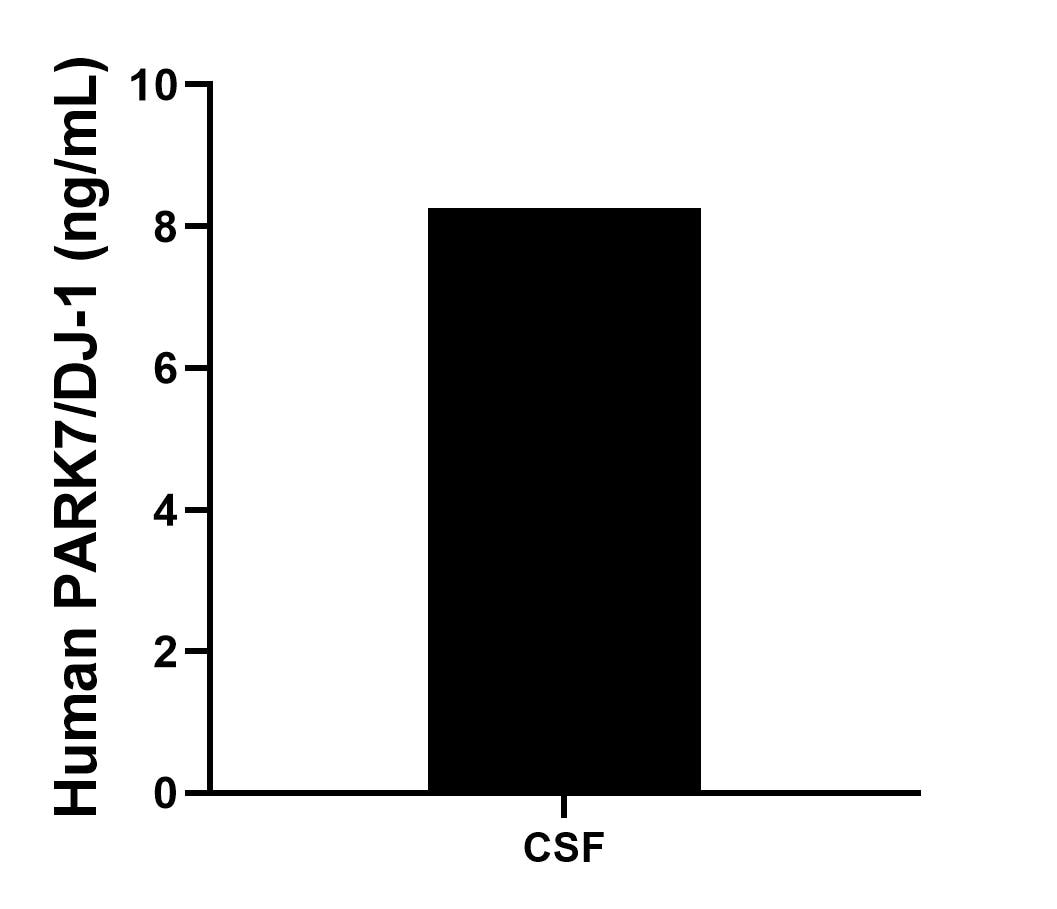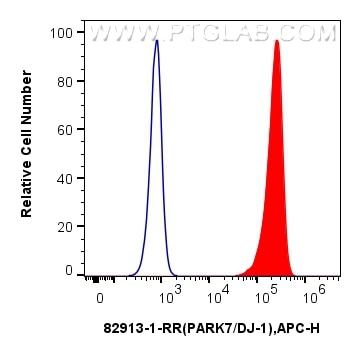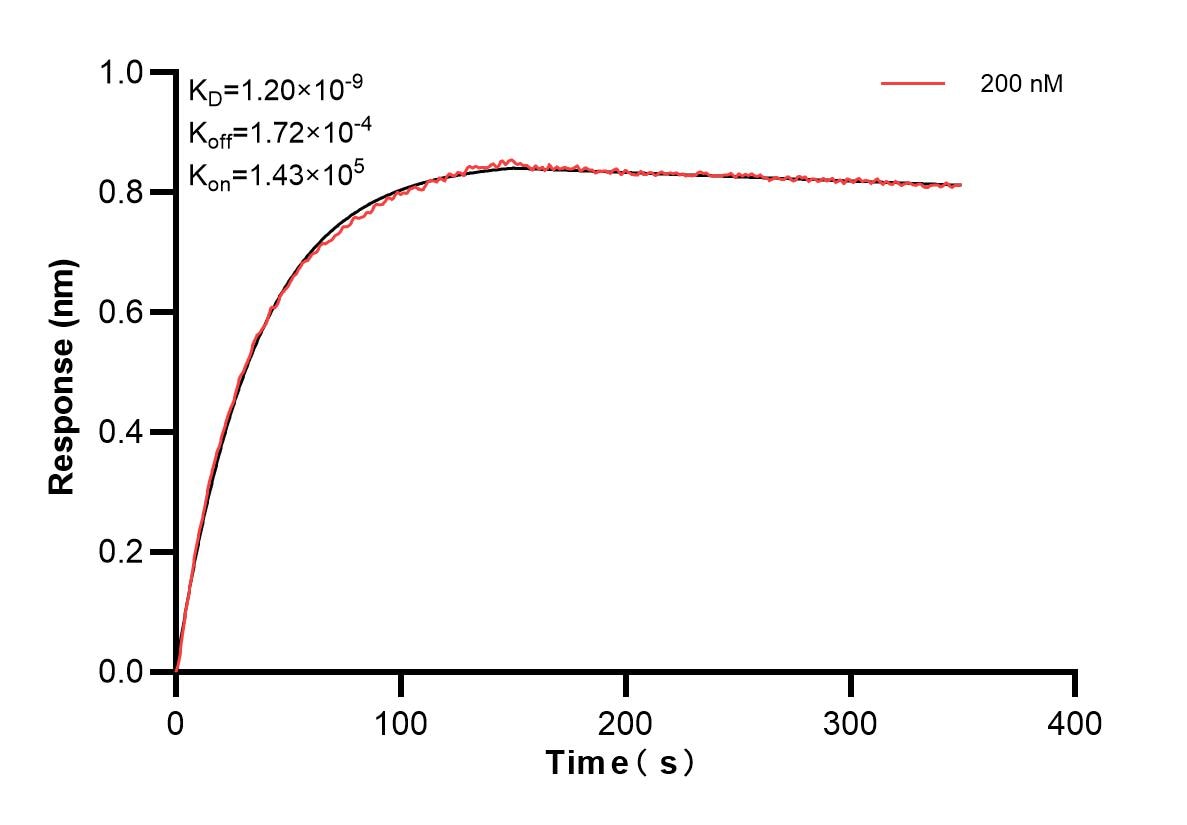Anticorps Recombinant de lapin anti-PARK7/DJ-1
PARK7/DJ-1 Recombinant Antibody for FC (Intra), Sandwich ELISA, Indirect ELISA, Sample test
Hôte / Isotype
Lapin / IgG
Réactivité testée
Humain
Applications
FC (Intra), Sandwich ELISA, Indirect ELISA, Sample test
Conjugaison
Non conjugué
CloneNo.
230124E12
N° de cat : 82913-1-PBS
Synonymes
Galerie de données de validation
Informations sur le produit
82913-1-PBS cible PARK7/DJ-1 dans les applications de FC (Intra), Sandwich ELISA, Indirect ELISA, Sample test et montre une réactivité avec des échantillons Humain
| Réactivité | Humain |
| Hôte / Isotype | Lapin / IgG |
| Clonalité | Recombinant |
| Type | Anticorps |
| Immunogène | PARK7/DJ-1 Protéine recombinante Ag2287 |
| Nom complet | Parkinson disease (autosomal recessive, early onset) 7 |
| Masse moléculaire calculée | 189 aa, 20 kDa |
| Poids moléculaire observé | 20-25 kDa |
| Numéro d’acquisition GenBank | BC008188 |
| Symbole du gène | PARK7 |
| Identification du gène (NCBI) | 11315 |
| Conjugaison | Non conjugué |
| Forme | Liquide |
| Méthode de purification | Purification par protéine A |
| Tampon de stockage | PBS only |
| Conditions de stockage | Store at -80°C. 20ul contiennent 0,1% de BSA. |
Informations générales
PARK7, also named as DJ1, belongs to the peptidase C56 family. It protects cells against oxidative stress and cell death. PARK7 plays a role in regulating expression or stability of the mitochondrial uncoupling proteins SLC25A14 and SLC25A27 in dopaminergic neurons of the substantia nigra pars compacta and attenuates the oxidative stress induced by calcium entry into the neurons via L-type channels during pacemaking. It eliminates hydrogen peroxide and protects cells against hydrogen peroxide-induced cell death. PARK7 has cell-growth promoting activity and transforming activity. It may function as a redox-sensitive chaperone. It's precursor undergoes a cleavage of a C-terminal peptide and subsequent activation of protease activity in response to oxidative stress. The amino acid replace at 166 (L → P) reduces PARK7 protein stability and leads to increased degradation. The predicted MW of this protein is 20 kDa, An additional 25 kDa band can be observed due to modification (PMID: 31767755).
